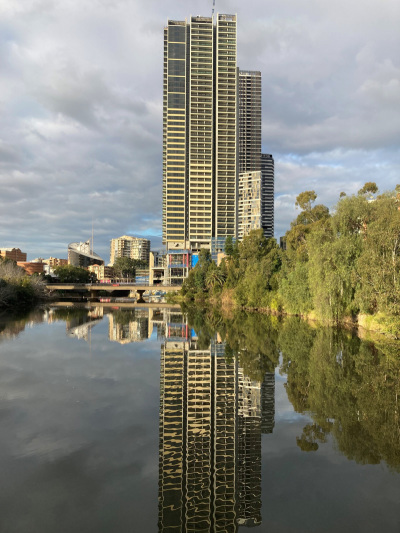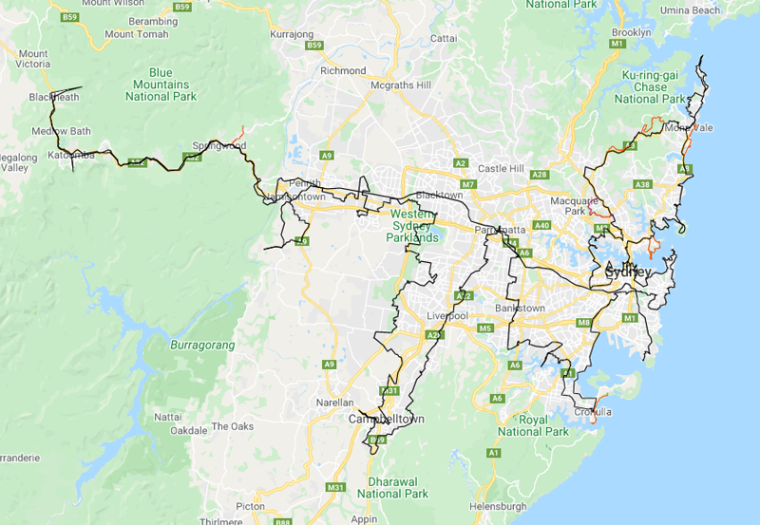
During this Covid year I had a personal 'project': a walk for exercise, reflection, biblical encouragement from Sir David Suchet, and quite a few podcasts (Yes including The Rise and Fall of Mars Hill, and the more substantial Everything Just Changed and Undeceptions).
I undertook the Camino de Sydney. This local pilgrimage was developed by two Sydneysiders Brent and Giselle in 2020 who were unable to walk 'The Way of St James' to Santiago de Compostela in Spain). I had hoped to undertake ‘The Way’ in 2021, and with this not being possible I was pleased to be able to walk the Sydney way.
There are 29 walks in seven stages: Over the Pyrenees, Meseta, Southern Cross, Star of the Sea, Mary MacKillop, Galicia and the Way of St James.
I completed the Sydney walk over several months (complying with the movement restrictions that were in place at times in Sydney, including curfews and closed area arrangements, and with an alternate to Pulpit Rock as that has been closed due to the fires in 2020).
My first walk was from La Perouse to Central Station, and my last walk Balmain to St Mary's Cathedral via the Rocks. The overall length is approximately 600 kms and is more likely undertaken by pilgrims as a series of day walks, rather than 29 days straight. I had three nights when I stayed overnight locally and then continued the next day, but mostly would use public transport to go back to the location where I had ended the previous walk. With some suggested alternate walks and additional exploration (and yes, backtracking as I did explore some parts not intended at the time), I managed over 720 kms, with just over 39 kms being my longest day out.
I changed early in the walk to a pair of hiking boots that catered for bush and city walking (I will not advertise the brand), but they have lasted well and should serve many more walks.

Some Reflections
Development and Housing
Development is constant in a city this size, but the last decade has witnessed a staggering level of development, and the emergence of key areas in Greater Sydney. Parramatta is the prime example of this change. The Parramatta River at the heart of Parramatta City provides a backdrop to substantial commercial and residential development.
Even in the time since the development of this Camino I found that some areas and streets had changed entry or exit arrangements due to housing and commercial development. Sometimes this necessitated an extended circuit to get back to the next area of the walk.
There has even more a move to close local traffic streets to through traffic with gated areas secured by pin for entry. Fortunately walking usually enables one to go around these areas (hopefully legally!)
Homes and Houses
I think that homes are no longer homes, but investment properties and show or trophy homes. In an era when family sizes are smaller and household sizes are becoming smaller houses are becoming bigger. Wherever I walked (including some suburbs that were once not well regarded), older wooden houses have been replaced by two story mansions with double garages, and still there is not enough room for all the cars.
I hope this is not a modern parable of the rich man who built bigger barns, because of the need to store our increasing abundance of possessions, but sadly for many the idea is to “Take life easy; eat, drink and be merry” (Luke 12: 19b)
Whole suburbs or new housing estates have sprung up, seemingly overnight. These areas often include a smaller or boutique style shopping centre complex with a major retailer/food store as the centre anchor.
Houses have been not only becoming bigger, but are increasingly built on most of the available land with little garden or yard space, and no eaves. In a way they are the new style of terrace or apartment modelled on the inner city.
Apartment development has simply been colossal. From the tiny initial Meriton projects of the 1960s, large scale apartment developments are beginning to dominate in most areas of Sydney, except for the mountains, and parts of the northern beaches.
Water views are still prized
While the foundation of the ‘Emerald City’ is of course the harbour, I discovered an increasing focus on the water ways, canals, and rivers, providing another connection to water and illustrative of this lifestyle search. A now slightly older example is the Wolli Creek area development, and a newer example is the Paper Mill Precinct around Georges River, Liverpool. Both also connect with the trend toward multi-story and multi-facility apartment-based developments.

Parks and Recreation
Greater Sydney is blessed indeed with a wonderful array of national parks (I did love the Blackheath Blue Mountains area), but there are also many lovely local parks and areas. There has been an increasing development focus on recreation areas, notably the Greater Western Sydney Parklands, which has excellent facilities of all types.
Next time: reflections on walking, exercise and cross-cultural diversity.

Peter Bentley is a Sydney (Australia) based writer and commentator on church, media and cultural issues. He is a former President of the Australasian Religious Press Association.